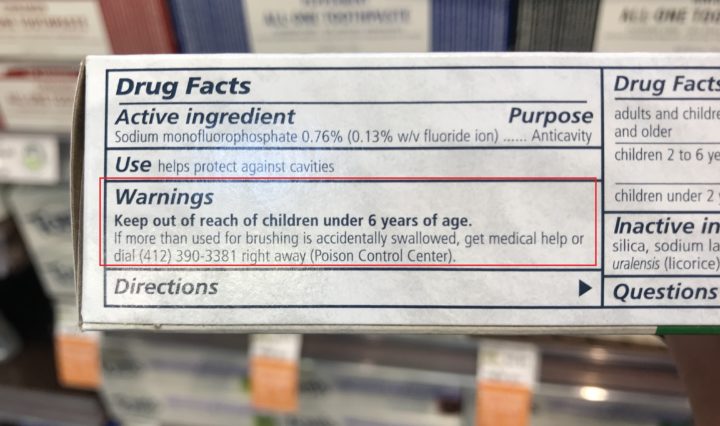It costs a pretty penny to have a hospital birth. My first child was born in a hospital. My second child will not be (for reasons which will be illuminated below). My experience at the hospital with my daughter was not unpleasant. I had a birthing plan and they followed it. I was in and out as quickly as possible and used as few interventions as possible. The cost was close to $12,000 (that was a bargain). It’s not unheard of to pay $30,000 for a vaginal hospital birth. A c-section costs 2-3x that amount. Now, assuming you have insurance, your out-of-pocket costs won’t be anywhere near those numbers. However, those numbers are what are referred to as “real cost”. The hospital receives the full amount billed after negotiations whether it’s from you directly or your insurance company. Now, there’s still an additional cost to you that you may not be aware of. These astronomical costs are built into insurance premiums. Cancer, diabetes, births,.. you name it – these costs are all factored into the cost of health insurance plans based on average pricing and risk ratios. If 1 in 3 people are expected to get cancer, those costs will be spread among everyone in the form of premiums regardless of whether or not you’re the one to actually get cancer. After all, health insurance consists of private, for-profit companies. The average health insurance plan for a family of four in America costs $2,400 per month. Again, if you’re lucky enough to have your employer pay the majority of these costs, you may not have to pay that either. But rest assured, someone is paying these prices. Is there any wonder why money is deployed for branding hospital births and home births a certain way? Home births are bad for business (unless you’re a midwife). Home births are often branded as irresponsible or even reckless. Is this true? What do science and statistics really say?
The main concern when evaluating the birthing options is the safety for both mother and baby. Did you know that the US has the HIGHEST infant mortality rate among all wealthy nations? We average 6.1 infant deaths among 1,000 births (1). We also have the highest number of preterm births. This is an embarrassment and should be a wake-up call that we’re doing something wrong. It’s not just infant deaths that rank high in comparison either. The US ranks abysmally low in terms of ALL deaths for its citizens despite the fact that we pay the most for healthcare (by far)! Fertility is also dropping rapidly (in all developed nations). What’s going on? In general, the answer lies within our increasingly toxic environment and corporate interests in our health care system. Let’s explore some factors as they relate to infant and mother mortality during the birthing process.
Finland ranks the best in terms of infant mortality rates with just 2.1 deaths per 1,000 compared to the 6.1 deaths in the United States. Here are some key differences to spark discussion points:
Percentage of C-sections per birth in 2017 (2,3):
United States: 32%
Finland: 6.6%
Percentage of births that included a midwife (2,3):
United States: 4%
Finland: 75%
So, why does the U.S. have such a high caesarian rate? Does a cesarian section increase the likelihood of complications? Does a midwife being present have anything to do with it?
A metanalysis study(4) concluded that caesarian sections dramatically increases the chances of maternal mortality. The odds were slightly higher for elective caesarian. They also increase the odds of the baby dying within the first 28 days of life. However, caesarian sections decreased complications in breech presentations and risk of intrapartum fetal death in cephalic presentations (translation: reduces the risk of a baby dying during the birthing process when the head is down). So, this sounds like a toss-up.
Let’s review some more studies. This study found that maternal mortality increased significantly with elective caesarian and so did this study which also mentions the increased odds of breastfeeding challenges post caesarian delivery compared to vaginal deliveries. There are a lot of studies that seem to paint the same picture when it comes to mom’s health (Caesarians increase the chance of death significantly).
When it comes to baby’s health, it’s more of a mixed bag. This study compared the rates of neonatal deaths in caesarian sections versus vaginal deliveries for women specifically in the United States. The study spanned over three years and included 5.7 million births. It found that the rate of neonatal death is more than double among caesarian deliveries compared to vaginal deliveries. 1.77 out of 1,000 caesarian born babies die compared to .62 out of 1,000 vaginally born babies.
Sometimes caesarian sections are medically necessary. Although, I’d argue those are rare instances. Both epidural use and labor induction techniques are associated with higher rates of pregnancy. Did you know among the women who opt for home births, approximately 12.1%(6) end up being transferred to a hospital? Just 3.1% of these transfers resulted in a c-section. I don’t know how many of those resulted in c-sections but even if it’s 100%, the average rate of c-sections for hospitals is more than TEN TIMES that of choosing a different location for the birth (home). 4.7% of the transferred was due to the desire to have an epidural.
Did you know that in some hospitals the rate of caesarian births is 70+%?! This is crazy. It’s no secret why your chances of having a caesarian birth are dramatically higher in a hospital but I’ll spell it out anyway in case you’re still catching up. 1) Cesarian sections generate more money, 2) they’re faster (the quicker you’re in and out, the more time for other patients), and 3) they decrease the doctor’s liability. Number three might seem contradictory but doctors are more likely to be sued if something goes wrong during a vaginal birth as opposed to a c-section. Why? C-sections can be a life-saving intervention. That doesn’t mean it’s always appropriate or would have resulted in a different outcome but if that option is not exercised, the doctor will be blamed for not doing everything possible. This is another big motivator for doctors. They get more money and more protection through a measure they can pawn off as “precautionary”. Win-win for the doctor but not always for the patient or the baby.
Of course, I can’t talk about caesarian sections without mentioning the impact on your developing baby. Maybe both mom and baby escape the operation seemingly unharmed (hopefully). There is still an impact on your baby whether you can see it or not. Many people and doctors do not connect the dots when the manifestations of these early-life interventions unfold days or even years later. The biggest risk comes with removing the source for seeding the developing microbiome. If you follow me or you’re into health science at all, you know that the microbiome is of critical importance to a healthy functioning body and it’s responsible for training our immune system. When the baby goes through the vaginal canal, the bacteria is absorbed through the skin and acts as a seed for the microbiome. That’s why it’s important not to wash baby right after birth (or at all) and it’s also why it’s important that they get immediate and plenty of skin-to-skin contact (they’ll also pick up your skin microbiome).
So where does the caesarian baby get its bacteria from? Maybe some from mom’s skin but the majority will come from the bacteria kicking around the hospital which is not usually the beneficial kind (I’m being generous with my wording here). This may explain why the caesarian section increases the odds of the child having celiacs(5), autoimmunities such as Multiple Sclerosis and Type I Diabetes(7)(10), allergies (8), anemia(9) and even obesity. Check out this scholarly article for more information on the impact caesarian sections have on a developing baby.
Fun fact! Did you know the main ingredient in breast milk (indigestible oligosaccharides) is specifically for the gut bugs to eat in the baby’s digestive tract?
I won’t get into it too much but this study underscores the importance of breastfeeding for the development of the microbiome by stating this, “Establishment of the infant microbiome has lifelong implications on health and immunity. Gut microbiota of breastfed compared with nonbreastfed individuals differ during infancy as well as into adulthood.” Here’s another study (in addition to the one mentioned above) that underscores the negative impact c-sections can have on breastfeeding rates compared to vaginal births.
For me, the decision to have a baby at home is not even really based on the cost or the risk of c-section. I’m pretty strong-willed. For that reason, I don’t calculate my risk of c-section being as high as another woman who perhaps doesn’t understand these nuances. Personally, it’s more about convenience and control. Having a baby at home is really convenient. I absolutely hated my hospital stay. I couldn’t get a wink of sleep. I was exhausted. The second reason I’m opting for home birth is that I’d like to know that my baby isn’t being given anything when not in my sight such as the Hep B shot, the vitamin K shot, or formula. These things happen all the time. Yes, even if you’ve signed a consent form opting out.
I should mention, my decision for home birthing is impacted by the fact that I’ve had a successful first birth. It was quick and it was natural. I know what to expect and I know my body can do this without medical intervention. If you haven’t had a baby yet, home birth can be more daunting and there’s no shortage of people who will attempt to advise you against home birth. If you’re close to a hospital, usually those people can be appeased. There is, however, a wide breadth of evidence confirming home birth as a safe option if you’re interested in looking at some data. A large prospective study comparing the outcomes of home birth versus hospital found similar risks for neonatal and intrapartum mortality (death during the first 28 days of life and death during the birthing process). There are many other studies that confirm home birth as a safe option. Here is one. Please comment below if you’d like more links.
I can certainly appreciate the hesitation for new moms when it comes to home births. With a certified midwife present, you can feel assured that you’re in good hands. Another option for those in-between home birth and hospital birth is a birthing center. The rate of hospital transfers for a birthing center is twice that of home birth. Therefore, your caesarian risk is higher but I would choose this over a hospital birth personally if you’re still apprehensive about home birth.
In conclusion, hospital births result in higher rates of caesarian sections than home births. C-sections increase a mother’s chance of complications and death. C-sections increase a child’s susceptibility to infections, autoimmunity, obesity, celiacs and possibly death. A practice called “seeding” may help mitigate some of these risks. C-sections may be medically necessary in some cases to save the baby. Home births and hospital births have very similar rates of death.
Thanks for reading!
Sources:
- https://www.cdc.gov/nchs/data/nvsr/nvsr63/nvsr63_05.pdf
- https://www.statista.com/statistics/276087/medical-or-health-characteristics-of-births-for-us-mothers/
- https://www.bbc.com/news/health-31766715
- https://www.ncbi.nlm.nih.gov/pubmed/17977819
- https://www.ncbi.nlm.nih.gov/pubmed/20478942
- https://www.ncbi.nlm.nih.gov/pmc/articles/PMC558373/
- https://www.ncbi.nlm.nih.gov/pubmed/21982872
- https://www.ncbi.nlm.nih.gov/pubmed/21872915
- https://www.ncbi.nlm.nih.gov/pubmed/25733637
- https://www.ncbi.nlm.nih.gov/pubmed/30487172
Join our list
Subscribe to our mailing list and get interesting stuff and updates to your email inbox.




